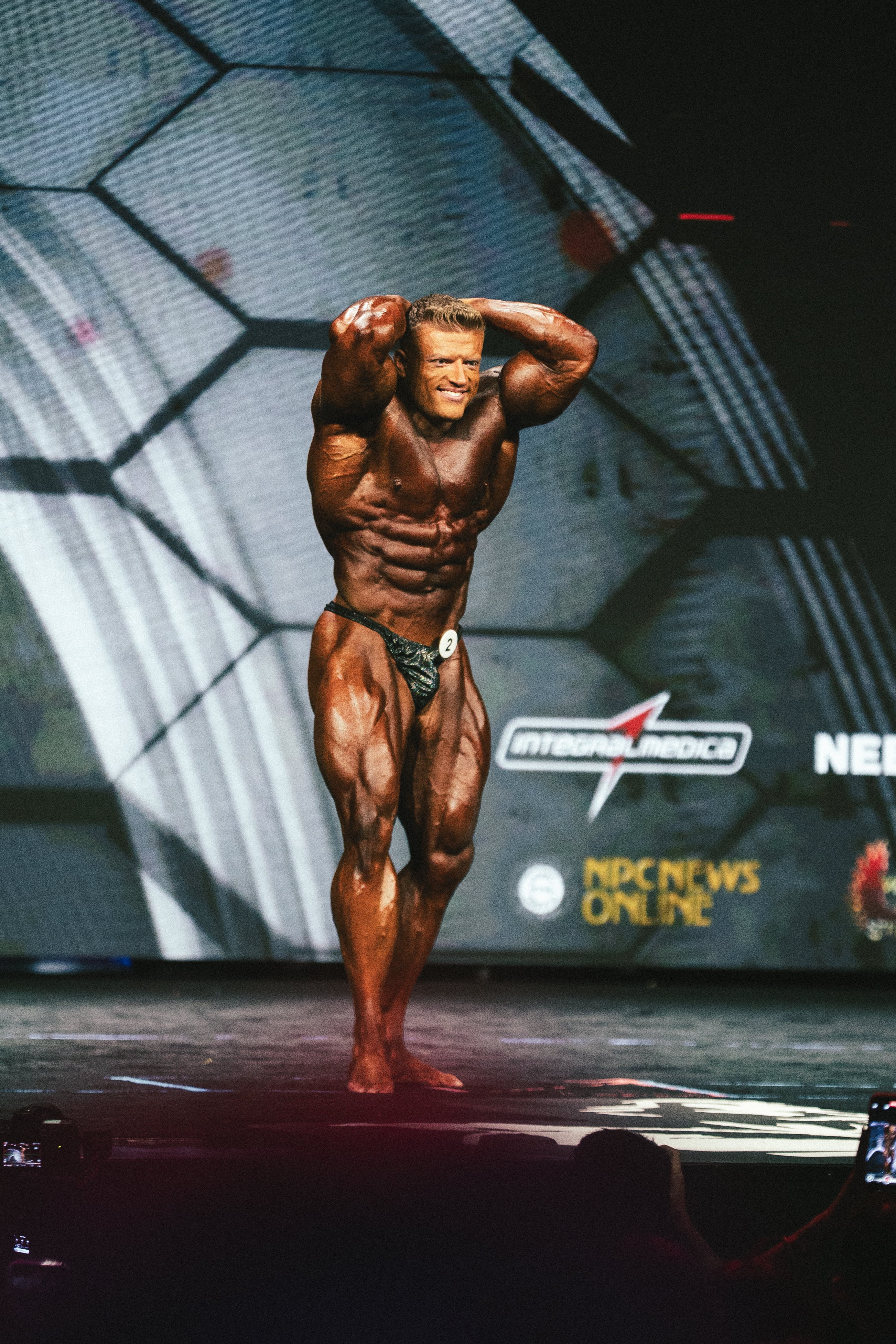Tags: Arnold Classic, Competition, Competition preparation
The Key to Stage Presence in Bodybuilding
Bodybuilding is a sport of presentation. You build muscles in the gym and your diet influences how you get in shape. But the best shape in the world is useless if it is not presented properly. This is where posing comes into play.
What is Posing in Bodybuilding?
Posing is the way in which you present your form and how you take the prescribed poses. Depending on the class, there are different poses that are prescribed by the association. This is to make it easier to compare the athletes with each other. Although there are prescribed poses, each athlete can pose differently to a certain extent in order to present their strengths and hide their weaknesses. You can create an illusion by using different postures and make muscles appear larger or, for example, hide a wide midsection, depending on how you turn your waist.
Why is Posing Essential for Competition Preparation?
Nowadays there are many posing coaches who will teach you how to pose based on the criteria set by the association. It can often help to have someone from the outside look over it, because at a certain point you lose your self-awareness.
You can also look at the stage sets and videos of the professionals, analyze how they pose and what transitions they make to get into the poses. The important thing here is not to simply copy a person!
Every body is different, just because a pose looks good on one person doesn't mean that you will also show your strengths in that pose. Therefore, it is important to analyze for yourself which poses "suit" you and how you can bring out individual muscle groups.
Posing plays a crucial role in bodybuilding competitions, but judging criteria vary depending on the federation. Learn more about the differences between IFBB and NPC and their significance for athletes in this article: IFBB vs. NPC – Differences and Significance.
How Can You Improve Your Posing?
1. Regular Posing Training
Regardless of whether you work with a posing coach or not, you should go through the posing regularly and ideally film yourself doing it. This way you can then watch the videos and analyze which poses worked and where there is room for improvement. You can also try out different poses and then compare them to see which one looks best.
2. Practice in Front of the Mirror – But Not Only That!
At the beginning it is helpful to practice in front of a mirror so that you can correct yourself immediately. Once you have mastered the poses, it is important to be able to do them correctly without a mirror, as there is no mirror on the stage where you can check whether the pose is correct. You should be able to do it "blind".
3. Build Endurance and Body Tension
Stamina is also important when posing. In competitions, you sometimes stand on stage for up to 20 minutes and have to be able to do the poses over and over again. So it's no use practicing holding the pose for a short time. You have to practice doing them correctly one after the other and maintaining body tension.
What Should You Pay Attention to When Posing?
1. Charisma is the Be-All and End-All
The judges see hundreds of athletes with similar form. Charisma makes you stand out. Be confident, pose with conviction, smile and show that you are enjoying the moment.
2. Eye Contact with the Judges
Convince the judges that you are the winner. A confident look and a self-assured posture leave a positive impression.
3. Breathing and Abdominal Control
A sagging belly can ruin your entire shape. Strong abdominal control is essential to present an aesthetic shape. Breathing techniques such as LPF (Low Pressure Fitness) and vacuums help to create a smaller waist.
4. Smooth Transitions Between Poses
It is not enough to hold the poses correctly - the transition between poses must also be smooth. Jerky movements look unaesthetic and can emphasize weak points.
The judges are looking for weaknesses. It is therefore important to change into the pose quickly and precisely after the announcement and to hold it without flinching. This requires strong body control and regular training.


